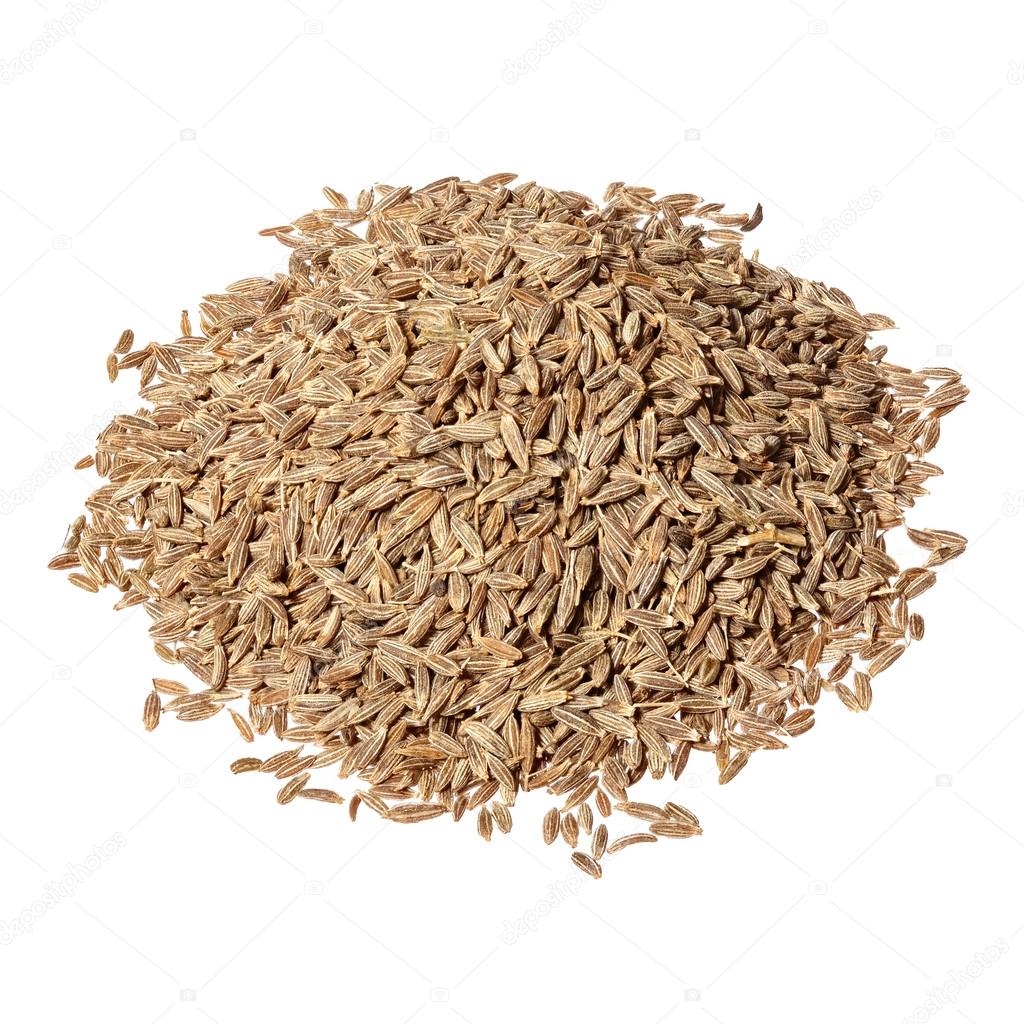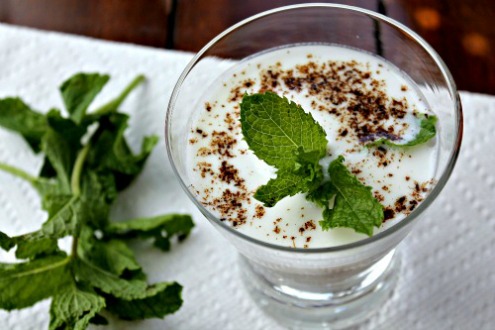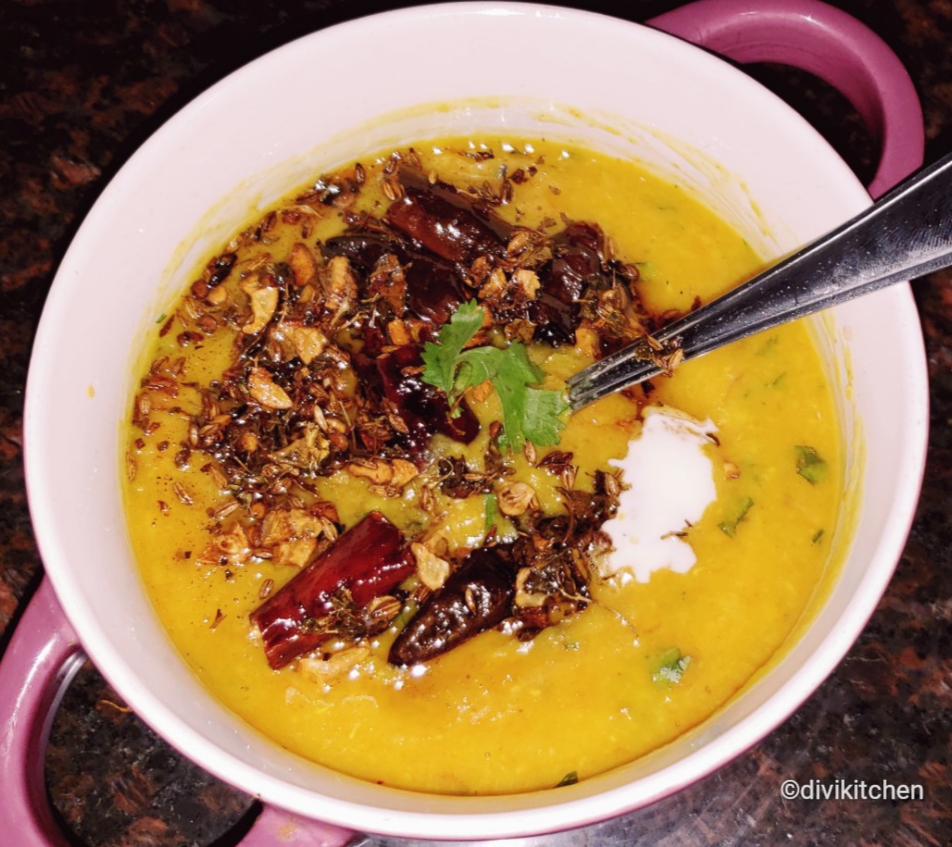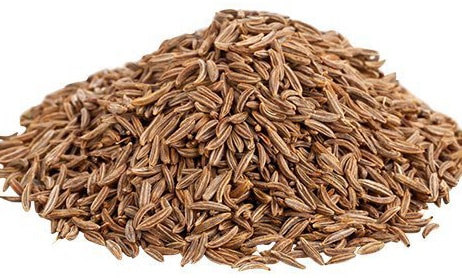The Spice Box- Cumin & Sahi Jeera
(Cumin & Shahi Jeera– A Supporting Hero)
What is Cumin (Jeera);-
Cumin, also known as ‘jeera’ in India, is a widely used ingredient in Indian cuisines. It is referred to as the dried seed of ‘Cuminum cyminum’ that belongs to the parsley family. Cumin seeds are derived from the plant of cumin, a herbaceous annual plant, that has slender branched stems about 30 cm tall.
Origin of Cumin-
Cumin is an ancient spice grown in Egypt and the Middle East. It has been found in 4,000-year-old excavations in Syria and in ancient Egypt, where it was used both as a spice and as an element in preserving mummies. Since ancient times, cumin has been used extensively in India as well as by the Greeks and Romans. It made its way into Mexican and South American cuisine after European colonization, brought by the Spanish and Portuguese.
It is a native of the Eastern Mediterranean countries and Upper Egypt, but is now cultivated in Morocco, Iran, Turkey, India, China and the Americas. The seeds of the plant are used to add flavour to spicy dishes. They are also used as an appetite stimulant and to ease several stomach disorders.
Harvesting of Cumin
Cumin seeds are harvested from an annual plant. The cumin plant grows to 30–50 cm (12–20 in) tall and is harvested by hand. cumin has been in use as a spice for thousands of years.
Main cumin producers’ counties are India & China, which produces 70% of the world supply and consumes 90% of that. Mexico is another major producer.


Description of Cumin Seeds
cumin seeds are oblong in shape with deep furrows and are yellowish brown in colour. These seeds find similarity with anise and fennel seeds in terms of their appearance but are slightly darker in colour. Its flavour is peppery and penetrating, thus making it a widely used spice throughout India, Sri Lanka, Mexico and several other parts of the world. In fact, they resemble a lot like caraway seeds.
There are two types of cumin seed available: —
- White Cumin (Cumin or Jeera)
- Black cumin (Caraway seed or Shahi Jeera)
White Cumin seeds impart distinctive strong flavor and warm perception on taste buds. It comes from the particular group of essential oils in them. The chief constituent and important aromatic compound in the seeds is cuminaldehyde (4-isopropylbenzaldehyde). White ones are generally used in curries and other large varieties of food.

Black cumin seed (Bunium persicum), also popular as wild or shahi jeera in the Persian and Indian sub-continent, is related variety of regular cumin. Its seeds feature long, slender, curved, dark-brown pods with distinctive earthy flavor.


Use of cumin seed in cooking: –
There are three main ways to use cumin seed in cooking depending on how we prepare them-
Toast or Roasting whole cumin seed(Bhuna Jeera) : – This intensifies & elevate the taste & flavour by giving a deep and smoky fragrance. The Roasted whole cumin can be grinded into powder. It is better to add roasted ground cumin either in the middle of or toward the end of cooking, instead of adding it first thing in the oil or any other cooking medium. Since by roasting we have already activated cumin’s flavor, further roasting can make it bitter.
Uses of Roasted cumin- It is extensively used in the preparation of various Indian dishes such as in salad dressing & seasoning, soups, Chat preparation, Dahi Bhalla, Raita & many curries & Gravies. It is also used in the preparation of several sweet & salted/Hot or cold beverages such as Lassi, , buttermilk, watermelon punch, Vegetable & fruit juices, Black tea etc.
 |  |
Pic source- Pinterest
Health benefit on use of Roasted cumin power– Cumin seeds also have many marvelous health benefits, the major being aiding in digestion. Yes, it is also believed that the consumption of Jeera can improve the digestion and reduces constipation.
As a Cumin Power( Jeera Powder) – it is obtain by grinding of dried whole cumin seed (without roasted) and used as a spices in cooking. Cumin powder is an aromatic and flavorful Indian spice used in almost every Indian curry be it a vegetarian recipe or a non vegetarian dish. it can be grinded alone or can be grinded with other spices to make masala.

Pic source- Food love
Cumin tempered in Hot oil: – One great way to release the flavour of cumin seeds is to fry them in hot oil. Tempering cumin (along with other spices) is a key technique in Indian cooking and essential when making dal.

The Crackling Spices of Indian Tempering
Tempering means Tadka or chhaukna in Hindi. It is a method widely used in Indian cuisine, in which whole or ground spices are heated in hot oil or ghee and the mixture is added to a dish. Hot fat has an amazing ability to extract and retain the essence, aroma and flavor of spices and herbs and then carry this essence with it when it is added to a dish. Indian tempering is done either at the beginning of the cooking process or as a final flavoring at the end.
Characteristic of cumin as a spices-
- Cumin seeds is a warming spice with a nutty, pungent flavour. It has a very earthy aroma and rich in volatile oils that get released when roasted lightly on direct heat or in oil. Cumin seeds can be used to make many dishes such as stew, soup, Indian curry, stir-fries, rice and almost any dish you can think of.
- It is impossible to think about Indian cuisine without cumin seeds. It is one of the most essential Indian spices which form the basis of many Indian curries, dishes and spice blends including Garam Masala. Cumin seeds can be used both in powder and whole seed form for making meats, rice and many vegetarian dishes both Indian and international. Cumin seeds are used to perk up everything from Persian stews to Indian rice dishes, Mexican beans, soups and even beverages (such as salted lassi).
- It is considered the second most popular spice after black peppercorn and is used extensively in Indian cuisine, Mediterranean, Latin American, Middle Eastern, North African etc. These little perky pearls of the culinary world help to instantaneously lift the flavours of any dish including drinks. It is available both as whole seeds as well as in ground form.
- Cumin in grounded form also forms part of various spicy mixtures, most important being ‘Garam masala’ (extensively used throughout south Asia), which are again used to add pungent flavors to the dishes and cuisines. It also has a number of medicinal uses and helps in curing many diseases.
- In Latin America, ground cumin is widely used in stews, bean dishes and for making fillings for dishes like empanadas or tamales. Cumin is especially delicious in refried beans, chili and tortilla soup.
- In the Middle East, cumin seeds are enjoyed in a variety of ways including aromatic rice dishes, succulent kebabs and delicious breads. Give this Persian cumin rice and chicken dish
Nutritional Value of Cumin Seed(100gms)

Health Benefit of Cumin-
- According to the Indian science of Ayurveda, cumin seeds have a cooling effect in the body. Thus they are routinely added to summer drinks for a refreshing taste. Jeera water (aka cumin water) is one of many popular drinks. Learn how to make it:
- Cumin is also high in iron (One teaspoon of ground cumin contains 1.4 mg of iron) and also contains manganese, an essential mineral that affects numerous functions like blood clotting, calcium absorption and brain function. Studies have shown that cumin may improve cholesterol levels, promote weight loss, and help prevent diabetes.
- Cumin also contains components that counter some of the long-term effects of diabetes.
- Promotes Digestion-The most common traditional use of cumin is for indigestion and have a diuretic effect. They also contain anti-carcinogenic properties. it may increase the activity of digestive enzymes, potentially speeding up digestion. It helps in giving relief from severe diarrhea.
- The very aroma of cumin – which comes from an organic compound called cumin aldehyde, the main component of its essential oil – activates the salivary glands in the mouth, which facilitate the primary digestion of food.
- Skin Care:- Cumin helps in protecting your skin against fungal and microbial infections due to its disinfectant and antifungal properties. It also aids in reducing signs of premature aging like wrinkles, age spots, and sagging skin. This effect is due to the presence of vitamin E which acts as an antioxidant and combats the free radicals.
- Food borne illness- The antiviral and antibacterial properties of cumin help fight infections and foodborne illnesses; it also acts as a disinfectant. The components carvacrol and thymol are responsible for this particular health benefit of cumin.
- Cumin has hypolipidemic properties, which helps to control high levels of cholesterol in the body. Cumin powder mixed with yogurt is also an interesting way to reap its benefits.
Shahi Jeera (Caraway seed)
Black Cumin (Bunium persicum) is a plant in the family Apiaceae (parsley family). Known as black cumin because of the shape of the seed. It is called as ‘zireh kuhi’, meaning ‘wild cumin’ in Persian and as ‘siyoh dona’ meaning ‘black seed’ in Tajiki. It is practically unknown outside these areas. Kashmiris call it as ‘Kashmir zireh’ or ‘Koshur zur’. It is usually used whole, have a pungent, anise-like flavor and aroma that comes from essential oils, mostly carvone and limonene.
Caraway fruits may contain 3% to 7% essential oil. The aroma of the oil is mostly dominated by carvone (50 to 85%) and limonene (20 to 30%).

Black Cumin, commonly known as black zeera or kala jeera is a very popular spice in north Indian cuisine and is a basic ingredient in Kashmiri cuisine as well. Seeds are used as a culinary spice in Northern India, Afghanistan, Tajikistan, and Iran.
Characteristic & Use of Shahi Jeera as a spices
- it has a distinct rich, nutty and a slightly peppery taste. The aroma of kala zeera is strong and distinct; diffusing into the air, an aura of a typical Mediterranean Market (its native place other than India). Seeds are used as a culinary spice in Northern India, Afghanistan, Tajikistan, and Iran.
- Kala jeera is one of the essentials in ‘Garam Masala’ and is usually available in the powdered form throughout the year. Generally used to flavor meat and rice dishes such as pulao & Biryani. It can also be used in cakes cookies, soups, omelets, rice and pasta dishes, cheese spreads and vegetable dishes.
- They are used as a spice in breads, especially rye bread. It is suggested to add seeds after a dish is cooked, as a long simmer may turn the flavour bitter. It has a sweet warm aroma with a flavour similar to aniseed and fennel.
- Kashmiri kala zeera is very rich in taste and smell as well. The small crescent shaped zeera is generally dark brown and black in color. Zeera as such is used in cooking in raw as well as roasted form, both imparting a distinct flavor to the dish. The seeds may be baked into breads, added to curry pastes and blends, or steamed with rice to give it a distinctive scent.
- They are used as a spice in breads especially rye bread, which is denser because of the yeast-killing properties of the essential oil, limonene.
- Indian cooks use this spice in many of their curries and tandoori dishes. It’s darker and sweeter than ordinary cumin. To bring out its nutty flavor, it helps to toast the seeds briefly before using them.
- The essential oil extracted from caraway is used to flavour liquers, mouthwashes, toothpastes and chewing gums. Black Cumin Seed help in Digestion, Psoriasis, Eczema, Diarrhea, Colic, Asthma, Allergies, Cough, and Flu.
Where Do Caraway Seeds And Cumin Seeds Come From?
Both Cumin seed and Caraway seed appear to be visual twins with a slight difference in their colour or shape. Caraway seed is darker in colour when compared to cumin seeds.
It has dark and light brown zebra type stripes on their skin and is smoother to touch.
The shape of a caraway seed also tends to be slightly curved and bendy. They can be smaller in size to cumin seeds as well. However, the difference in size is not always guaranteed.
Cumin seeds are light brown in colour and have relatively a rougher surface. The colour is more even without the darker stripes. It does not have the curves like caraway seeds and are more linear in shape.
 Cumin seeds are lighter in shade and are less curvy
Cumin seeds are lighter in shade and are less curvy
So in body shape type one is curvy while the other is oblong!!
How Are Caraway Seeds And Cumin Seeds Used For Cooking
If I was to go with stories about the initial culinary uses of Cumin seeds then it can be traced back to the Mediterranean and Iranian regions.
Cumin seeds are increasingly popular in Latin American, African and Middle Eastern cuisines.
It is impossible to think about Indian cuisine without cumin seeds. It is one of the most essential Indian spices which form the basis of many Indian curries, dishes and spice blends including Garam Masala.
Cumin seeds can be used both in powder and whole seed form for making meats, rice and many vegetarian dishes both Indian and international.
Crushed whole seeds are also added to breads, cheese, biscuits and to also to baked goods for cumin flavoured taste.
Caraway seeds, on the other hand, is popularly used in Central and Eastern European cuisine particularly Germany, Finland, Sweden, Poland and Hungary.
However, its use has overflowed to other cuisines as well.
It is one of the main ingredients used for making Rye and Soda Bread.
It is also used to cook curries, sauces, flavouring and even as a pickling spice.
nearly a third of the world’s supply of Caraway seeds come from Finland where they are mostly grown.
How Does Caraway Seeds Taste Different To Cumin Seeds?
Even though the two look similar, their flavour is different.
While caraway seeds have a strong aromatic flavour, the flavour of cumin seeds is milder.
The taste of Caraway seeds is something akin to liquorice and it’s more nutty and earthy compared to cumin seeds.
The taste tends to be a bit sharp and to some extent slightly pungent.
Cumin seeds fall under the sweet category of spices and are mellow to taste when cooked or eaten raw.
As the flavour of cumin seeds is not overriding, it makes a great base spice for many spice mixes, sauces and curries.
Can You Substitute Caraway Seeds With Cumin Seeds Or Vice Versa?
We know by now that the flavour and taste of caraway seeds and cumin seeds are both different which means they really cannot be used as substitutes for each other.
If however the recipe calls for caraway seeds and you do not have any then your closest and best match for it is using fennel seeds, anise or even star anise.
All the above spices broadly belong to the liquorice family and have similar taste and flavour and can, therefore, be easily substituted with the other.
Since cumin seeds are more of a flavouring spice used for tempering dishes or add flavour to baked goods you can choose to omit it from the dish if you wish to.
Or the closest substitute for cumin seeds is to use cumin powder or coriander powder.
Using cumin seeds to replace caraway seeds is also a common practice, but it should be borne in mind that the flavours of the two are different and will give the dish a different taste, which is not that unappetising!
For cooking tips on possible spice substitute for some of the popular Indian spices, you can read my post on
